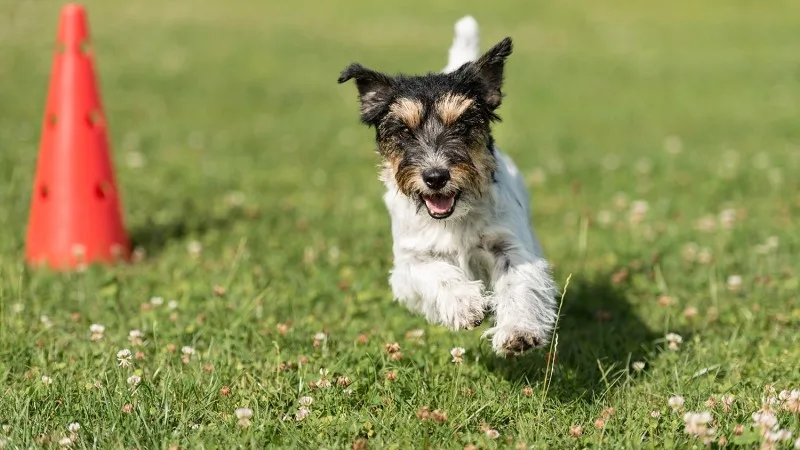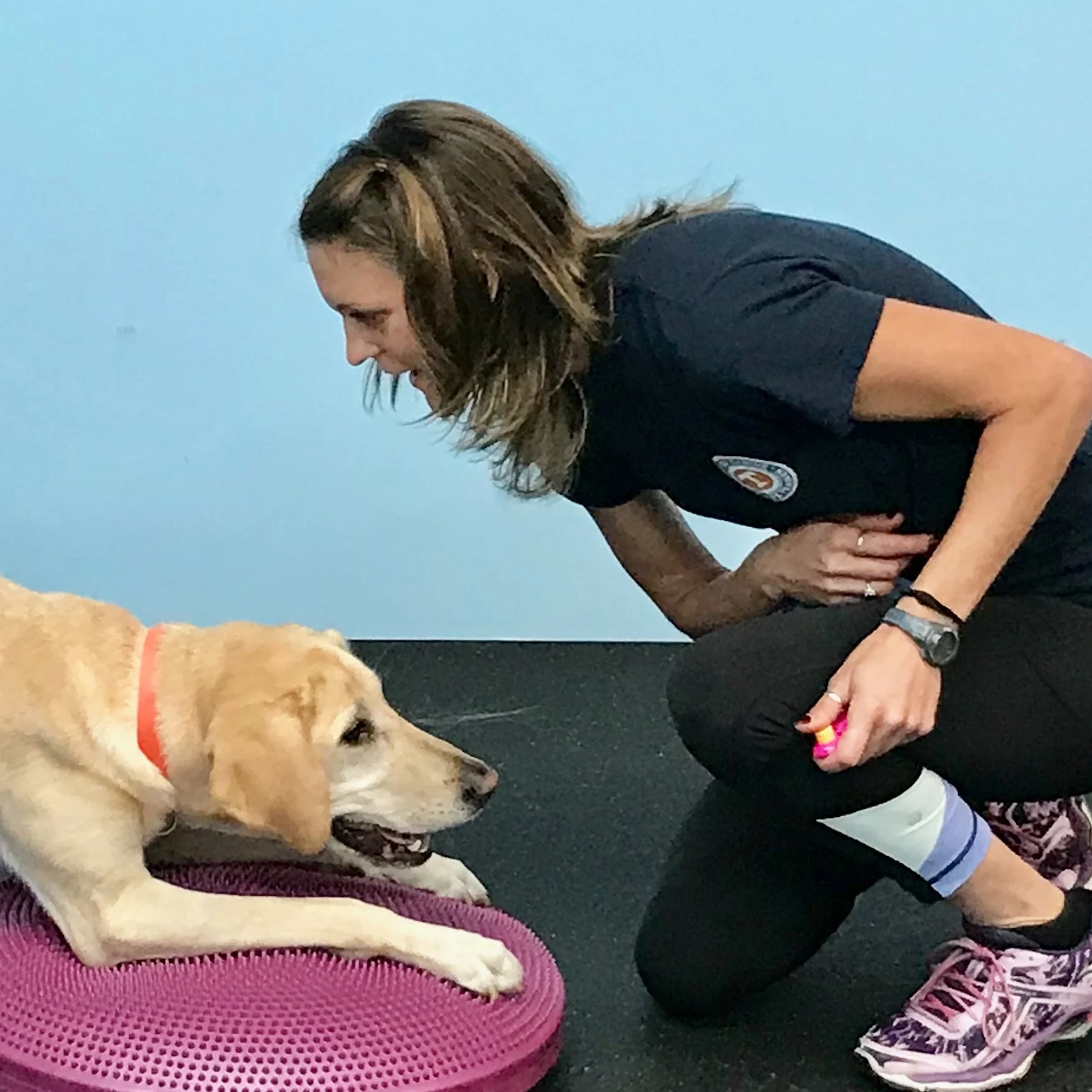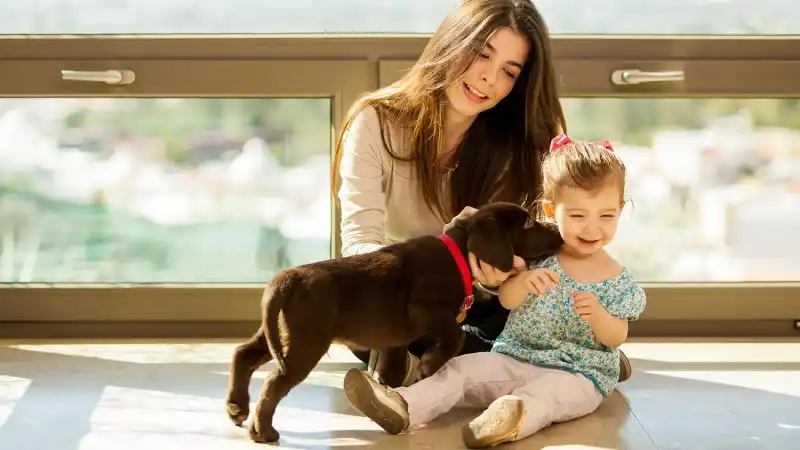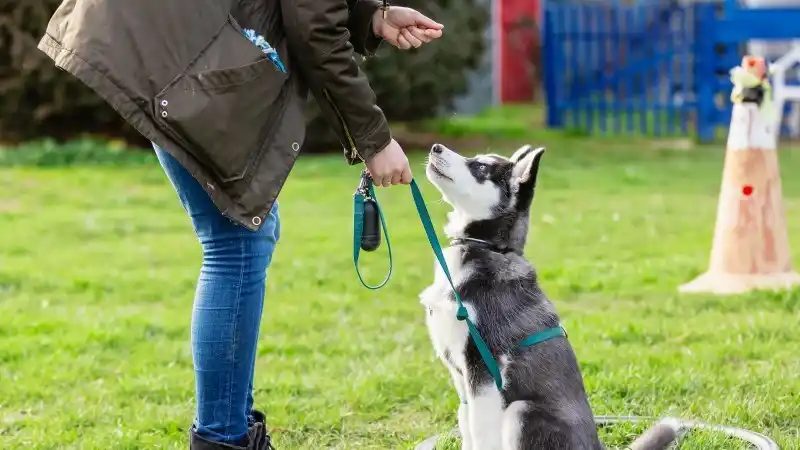Teach Your Dog to Wrap a Cone
Training your dog to wrap a cone is not only a fun skill to teach, but has many fitness benefits as well! Learn how to teach your pup this skill in a few easy steps.

Training your pup to wrap a cone on cue is useful in many situations. This popular skill is often taught in sports foundations, canine fitness, and family pet classes. Imagine your pup working his brain and his body by wrapping your rain boots in the comfort of your living room. Picture your dog trotting independently tree-to-tree or cone-to-cone in your backyard for some controlled, graceful cardiovascular exercise!
Equipment for Training
To begin, you will need treats, a hungry dog, and a cone. If you do not have a cone, you may use another prop, such as a tall rain boot. You also need enough space to be able to toss treats a few feet behind you. Your dog can be on leash for this drill if you are practicing outdoors in a non-fenced area.
How to Teach the Cone Wrap
Start facing the cone with your toes touching the cone. Your dog should be behind you slightly or at your side. Picture the cone as the middle of a clock. Wait for your dog to curiously walk around the cone to see what you are doing – after all, usually when you have treats, it means training time! If the dog approaches from your left and reaches 10 o’clock, say “yes” and toss the treat - using your right hand - in the direction of 5pm and a few feet further away from where 5 o’clock would be on the clock. Do the opposite if your dog approaches from your right – say “yes” for 2 o’clock and toss the treat in the direction of 7 o’clock.
The “yes” or a click from a clicker – also known as a marker signal - will indicate to your dog that he earned a treat in that moment and that a treat is coming! Again, the treat should land a few feet away from your feet so that your dog circles around the rest of the clock to retrieve his reward. This reward position conveniently sets your dog up for the next repetition. How efficient! Repeat the drill a few times. It doesn’t matter if your dog approaches from the right or left in the beginning – he should take turns from both sides.
Soon you will progress to saying “yes” for your dog approaching 12 o’clock instead of 10 or 2 o’clock. You will continue to toss the treat to the finish side of the cone wrap and a couple of feet behind you. Eventually, you will wait to say “yes” until your dog fully wraps the cone – this would be approximately 5 o’clock or 7 o’clock!
As your pup becomes more proficient, add two inches between the cone and your toes. If the dog tries to go between your feet and the cone, then you need to get closer to the cone again to help your dog succeed. Gradually add distance between the cone and your toes over time. Keep your training sessions short for a new skill by using 10-30 treats and ending the training session when the treats are gone! You can do multiple sessions per day.
Adding Cues for Your Dog
Wait until your dog understands what is earning him the treat and then add the verbal cue “wrap.” You may also add a hand signal, such as a point, to designate which item he should wrap! In most situations, it’s not necessary to use different words to indicate clock or counterclockwise. You can use the position of your own body to set up your dog to wrap from specific directions. To ensure muscular balance, your dog would ideally do equal numbers of clockwise or counterclockwise.
Why Train Cone Wraps
Use the cone wrap to warm-up or cool down your dog. Bending the spine is an important part of a warm-up or cool down before you play a game of fetch or do a dog sport.
You may also use the cone wrap to have your dog exercise indoors or outdoors. A popular exercise drill using the cone wrap is the cavalettis!
Use the cone wrap to help keep your older dog limber.
Using the cone wrap, you can reset your dog for another training skill - such as the obedience “front” - that requires your dog to start further away from you.
No Cone, No Problem
If you do not have a cone, use a chair, paper towel roll, or bucket as a substitute. At first, it’s easier to use a smaller object so that your dog is closer to you and can still see you as he rounds the clock to the 10 or 2 o’clock position.
After your dog becomes fluent in this behavior, you may use larger objects, such as trees or large trash bins! If the object is wider, your dog will actually shift more weight into his rear as he makes the turn. This works his hind muscles and creates more power, which may be desirable for canine athletes or dogs who need to develop strength!

Every Dog and Cat Deserves the Pet Insurance of Champions
Get prize-winning care for your pets.

Jasey Day holds the Certified Canine Fitness Trainer (CCFT) credential through the University of Tennessee. She is a member of the Bobbie Lyons K9FITteam - a team of compassionate canine fitness instructors who actively teach others and continually expand their own knowledge. Since 2004, Jasey has taught a variety of workshops and classes on the following: Puppy, Canine Good Citizen/Family Pet, Advanced Family Pet, Canine Fitness, Canine Swimming, Rally, and Agility. In addition, Jasey has earned over 60 titles in Dock Diving, Agility, Rally, CGC and Trick Dog. Jasey has worked full time for the American Kennel Club since 2007 and teaches at Care First Animal Hospital in Raleigh, NC. Jasey’s Labrador Retrievers spend their free time hiking, training, and snuggling with Jasey.
READ MORE ARTICLES

